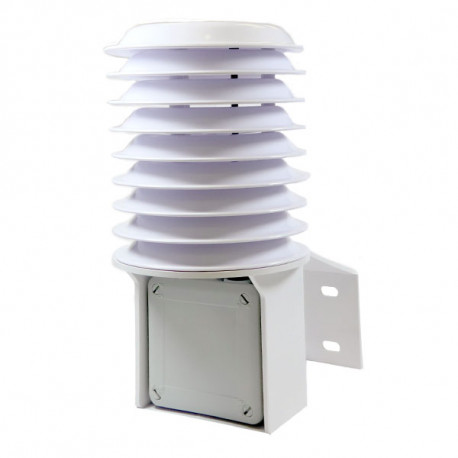New products
-

Urmet Yokis KITVV-UP: Zigbee Come and Go Kit
Zigbee two-way switch kit with 2 wireless switches + flush-mounted...
-

URMET YOKIS - 1-button Zigbee wall transmitter TLM1-UP + Binding
The TLM1 UP is a Zigbee 3.0 wall-mounted remote control with a slim...
-

SHELLY - Bluetooth-operated remote control Shellly Blu Button Tough
Shelly BLU Button Tough1 is a durable action and scenes activation...
Viewed products
-

WATTECO - ATM'O...
The ATM’O sensor measures...
-

MClimate - LoRaWAN...
MClimate Humidity and Temperature...
 View larger
View larger
WATTECO - ATM'O LoRaWan temperature, humidity and pressure sensor
NKE_50-70-099
New product
The ATM’O sensor measures temperature, relative humidity and atmospheric pressure in outdoor and industrial environments and transmits the data via a public or private LoRaWAN® radio frequency network.
More info

The ATM’O sensor measures temperature, relative humidity and atmospheric pressure in outdoor and industrial environments and transmits the data via a public or private LoRaWAN® radio frequency network.
The ATM'O sensor measures temperature and relative humidity as well as atmospheric pressure in outdoor or industrial environments. Data transmission over a public or private LoRaWAN® network is done periodically and in the event of a configured threshold being exceeded:
- Min. and max.temperature
- Min. and max. humidity
- Min. and max. pressure
In an industrial environment to determine the blowing conditions to maintain constant temperature and hygrometry in a room dedicated to an industrial process.
The sensor has been specifically designed for outdoor operation. The housing is waterproof and the electronic board that performs the measurements is tropicalised.
Commissioning is quick and easy. The ATM'O sensor is equipped with :
-an NFC identification tag (product code, serial number, batch number)
- a magnetic switch that allows the installer to easily activate/deactivate the sensor by placing a magnet on the upper dome of the ATM'O at the location indicated by the ILS label.
Ambient air pressure, temperature and relative humidity data can be stored in the local memory (aggregation) and compressed before being transmitted over the LoRaWAN® network. This reporting model significantly reduces the amount of data transmitted while preserving the autonomy of the sensor.
When powered by a 3.6V/7.2Ah battery, the sensor's autonomy ranges from 5 to 7 years for a "real time" configuration that performs 1 measurement every 10 minutes, transmitted immediately. If aggregation is used, the autonomy extends from 8 to 10 years.
FEATURES:
- LoRaWAN Temperature, humidity and pressure sensor
- Battery life: 5 years minimum (with “real time” configuration)
- Operating range: -20°C to +55°C
- Tropicalised measuring board
- Vertical antenna
- IP68 outdoor enclosure
TECHNICAL SPECIFICATIONS :
- RADIO FREQUENCY
- Frequency (MHz) EU: 863-870
- Transmitted power (dBm): +14
- Sensitivity (dBm): -140
- FIRMWARE
- Protocol: LoRaWAN®, Class A
- Transmission cycles: Configurable from 10 minutes to 24 hours
- Activation method Activation by Personalization (ABP) or Over-The-Air Activation (OTAA)
- Data encryption: AES128
- PRESSURE MEASUREMENT
- Range: 90kPa to 115kPa
- Accuracy: ± 1.5% between 0°C and 55°C
- TEMPERATURE MEASUREMENT
- Range:-20°C to +55°C
- Accuracy: ± 0.1°C between 0°C and 55°C ± 0.2°C between -20°C and 0°C
- HYGROMETRY MEASUREMENT
- Range: 0%rH to 100%rH
- Accuracy: ± 1.5%rH between 10%rH and 80%rH from 0°C to 55°C ± 2%rH otherwise
- POWER SUPPLY
- Voltage: 3.6V / 7200mAh – Lithium battery
- Autonomy: > 5 years with 1 measurement transmitted every 10 minutes > 8 years with 2 measurements/hour and 1 transmission/hour
- INTERFACE
- Magnetic switch: Reset, ON/OFF
- ENCLOSURE
- Size (mm): 150 x 150 x 250
- Fastenings: U-bolt and mounting kit supplied
- IP rating: IP68
- ENVIRONMENT
- Operating temperature: -20°C to +55°C
- Storage conditions: +10°C to +30°C +20%rH to +60%rH

